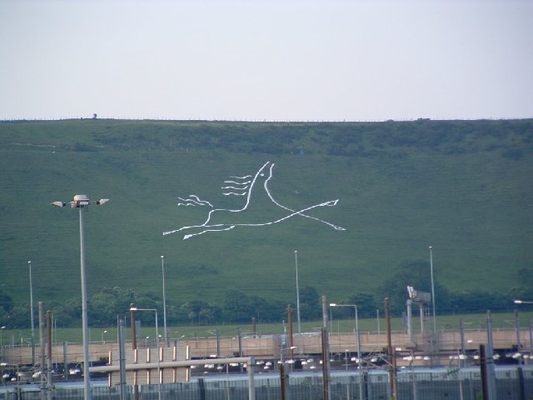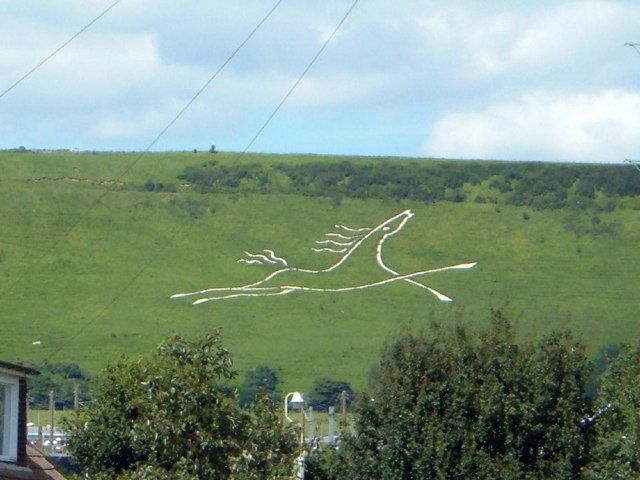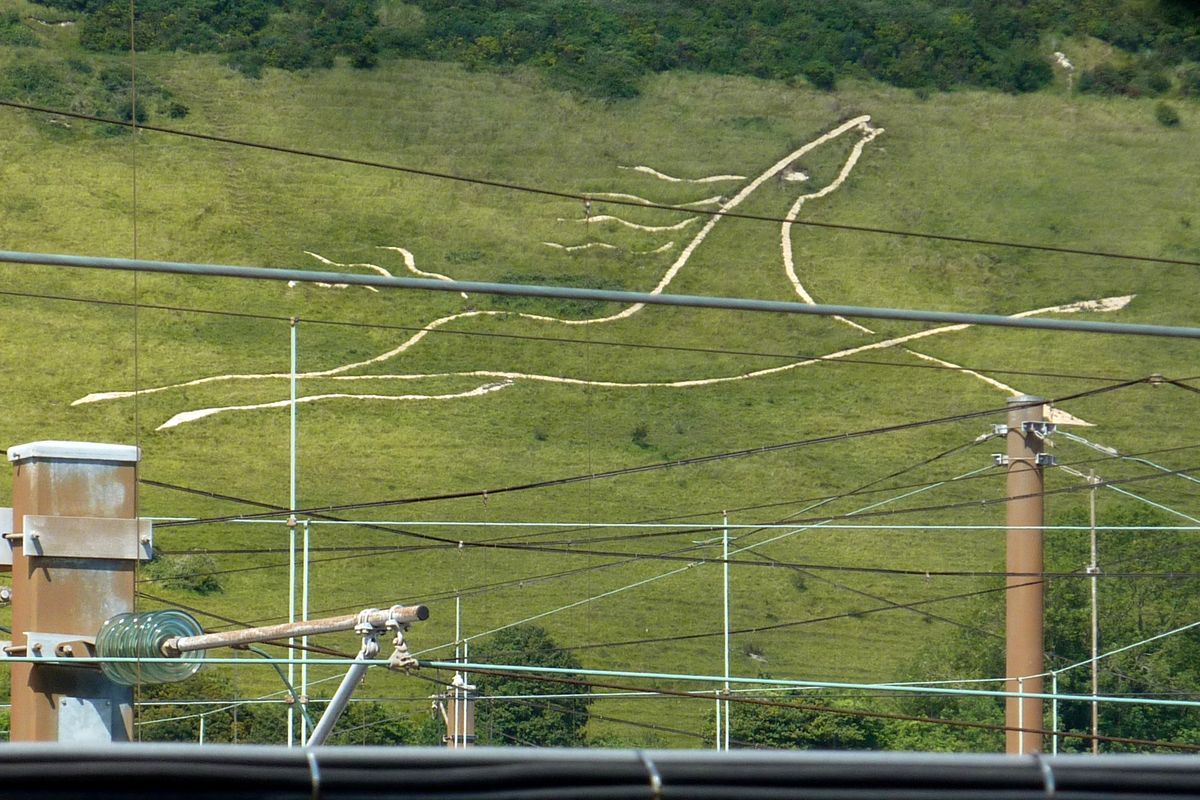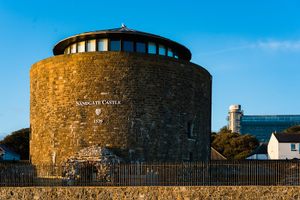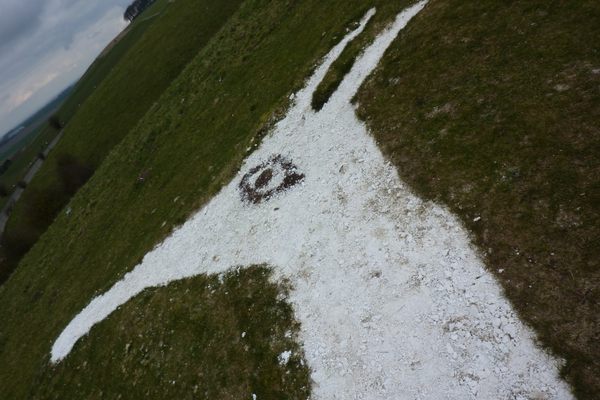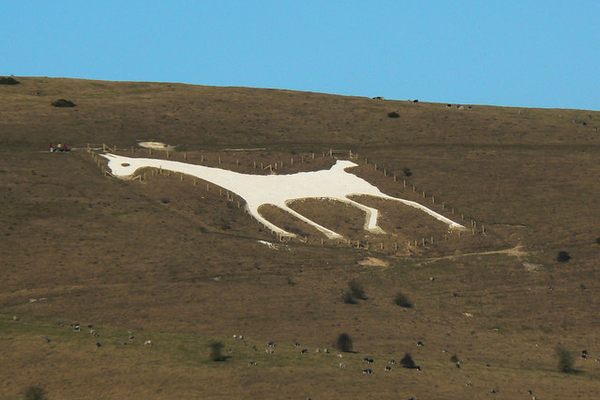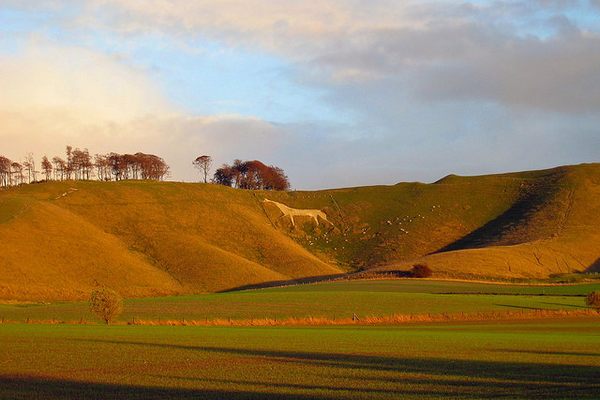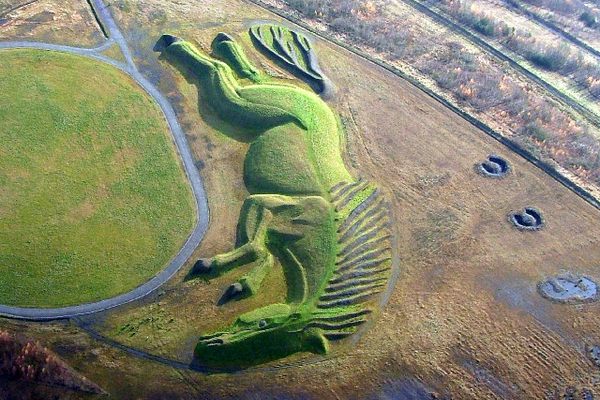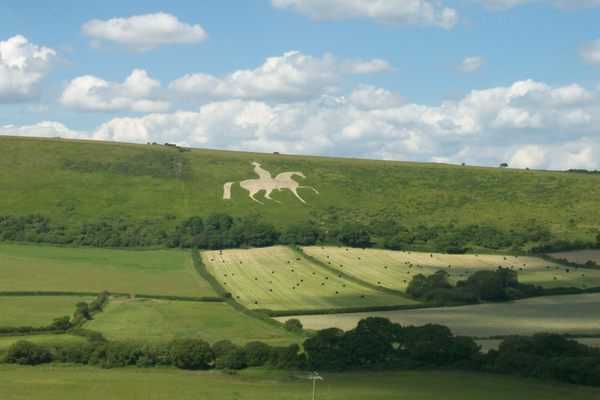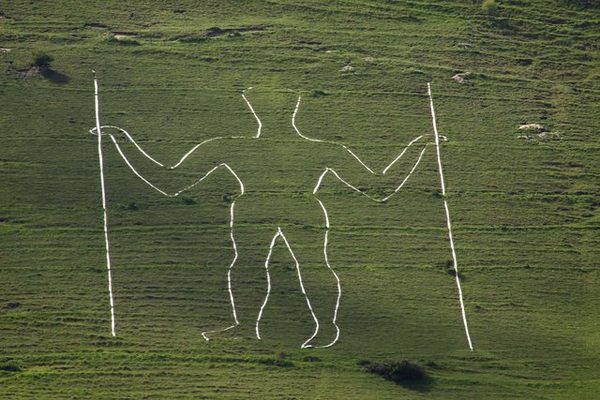About
One of England’s youngest horse geoglyphs is carved onto a hill in Folkestone. The figure’s legs are outstretched as if it’s either galloping or has slipped and landed on its barrel. Its stringy mane flows behind a head raised high with unbridled glee, perhaps in triumph.
For Folkestone locals, their hill horse is indeed a source of triumph. The nearly 300-foot-long equine was planned as a celebratory Millennium Landmark with the hope it would spur new interest in the area, but its creators had to jump a few legal hurdles before turning their vision into reality.
Though the proposal to create the horse was submitted in the late 1990s, opposition efforts stalled construction work until 2002. English Nature (a government watchdog group), the Green Party, and Friends of the Earth opposed the plan, as the hill the horse was destined to roam is protected under the European Habitats Directive as a Site of Special Scientific Interest.
In 2003, the European Union even declared that the horse was unlawful and behooved the United Kingdom government to either explain its decision to create the figure or restore the site. However, work had begun by the time the EU’s ultimatum arrived. The horse was already part of the hill.
A crew of volunteers, directed via radio by artist Charles Newington, had laid a canvas template of the horse onto the landscape. They then dug shallow trenches, which Gurkahs (Nepalese soldiers serving in the British Army) stationed nearby filled with limestone slabs. In 2004, nearly a year after its completion, a time capsule full of the names and remarks of the horse’s supporters was buried in the spot that marks its heart.
Related Tags
Community Contributors
Added By
Published
December 18, 2017


